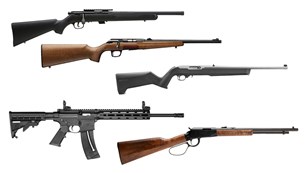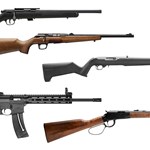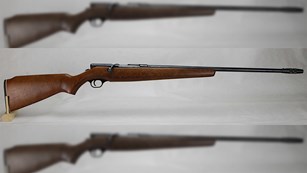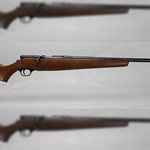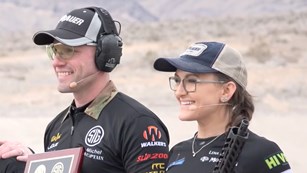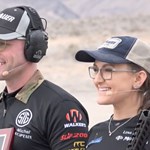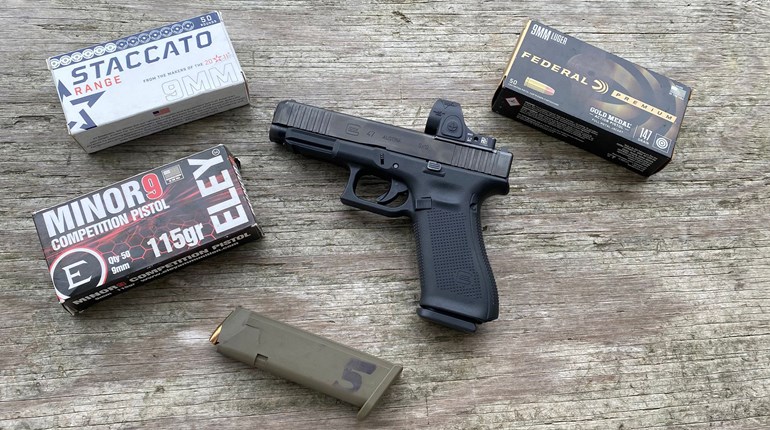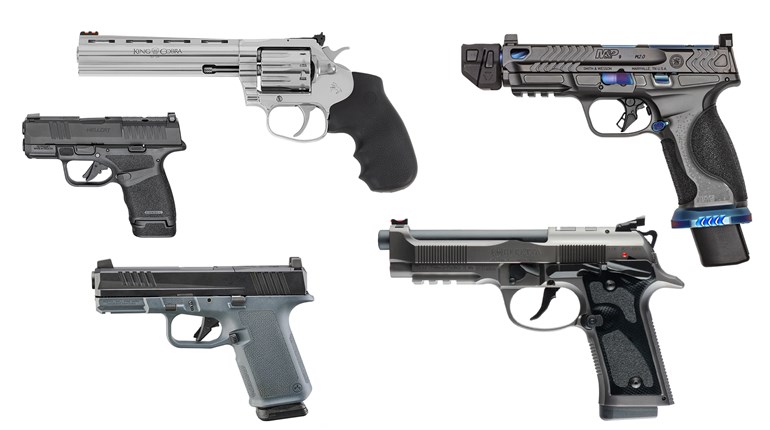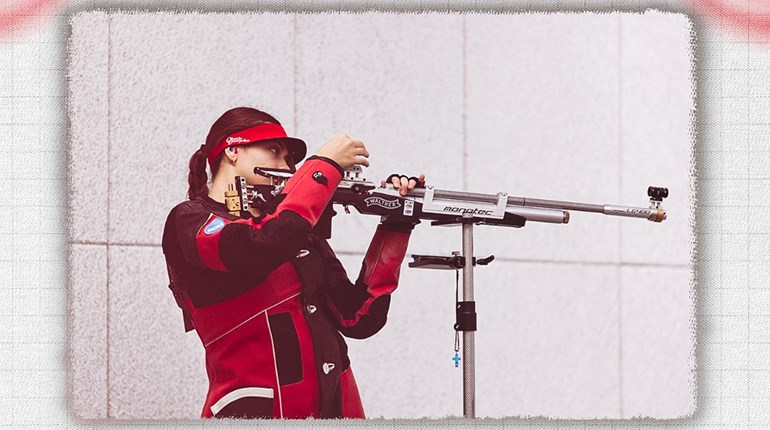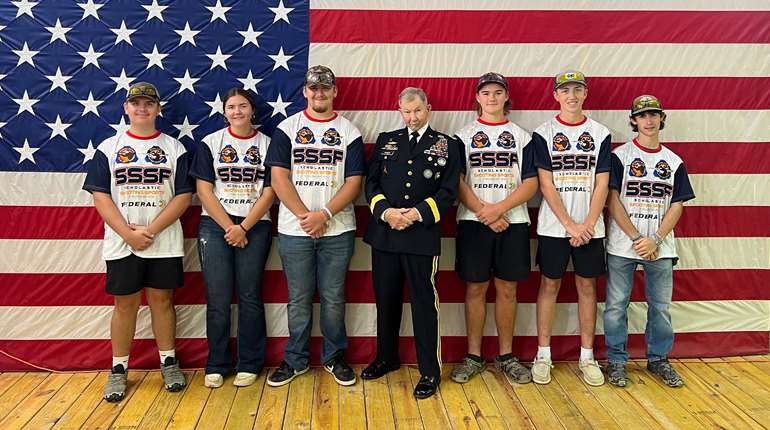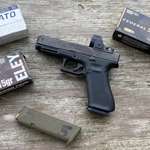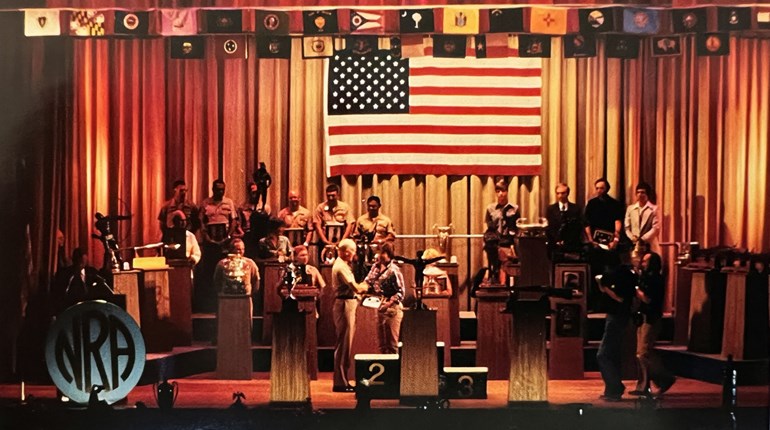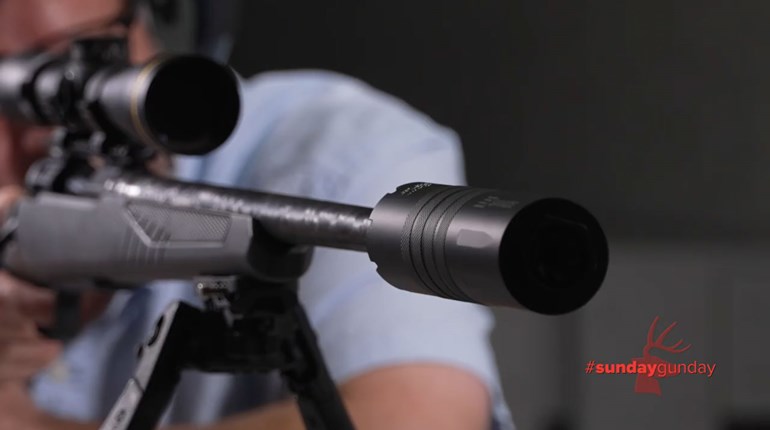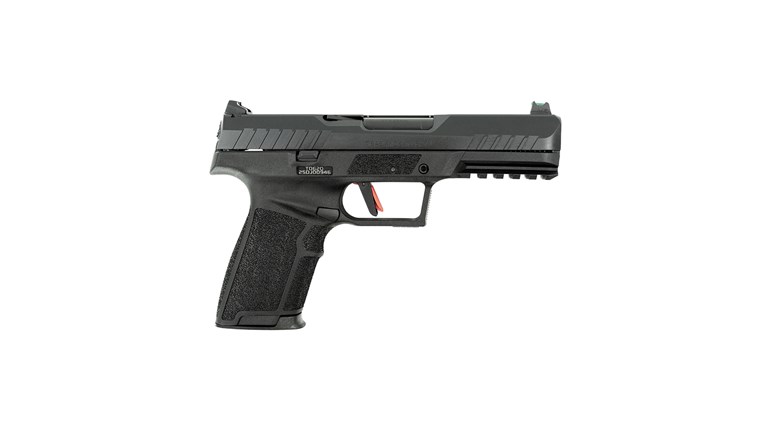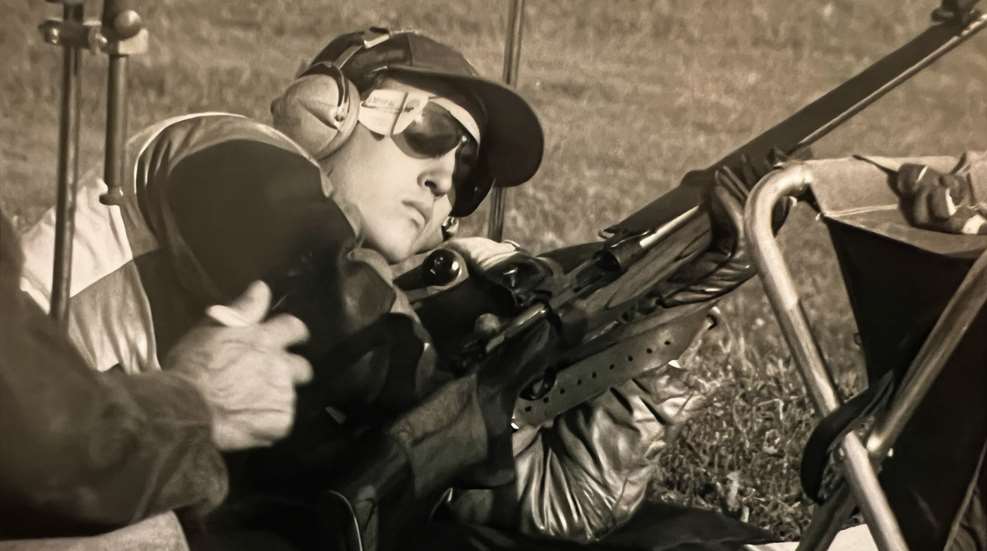
The persistent and successful growth patterns exhibited at the National Matches in the post-1968 era were recognized in a big way at the federal level this year when the House of Representatives reinstated most of the National Board’s funding request that had been slashed by the Army Budget Review Committee. Subsequently, National Match organizers, led by NRA Coordinator John Grubar and DCM Director Col. Jack Rollinger, welcomed nearly 3,500 shooters to a Camp Perry program that was appropriately underscored by persistently successful performances in each phase of competition.
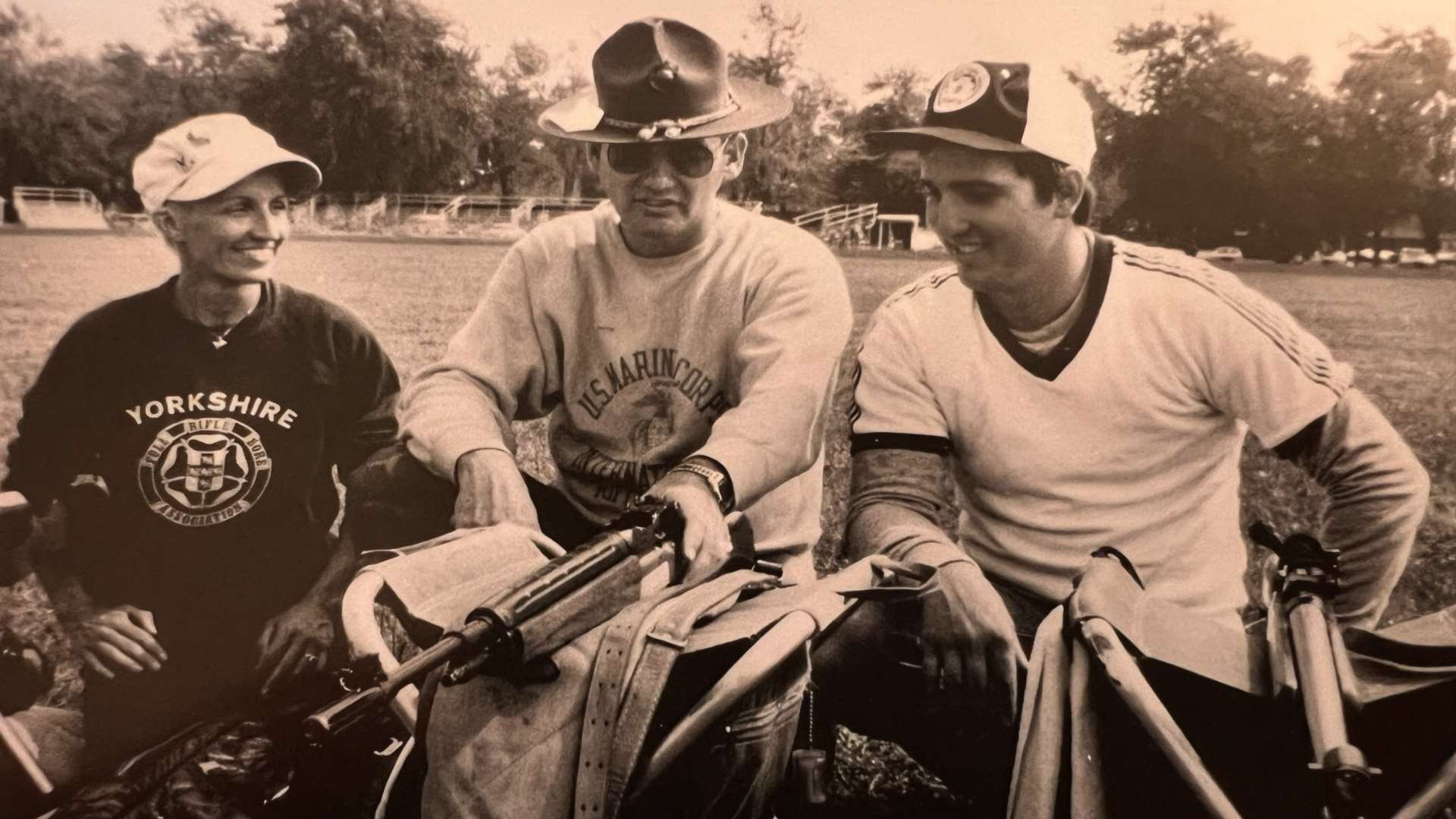
The pistol program underwent two significant changes in 1981 when a Small Arms Firing School (SAFS) returned to the schedule after a lengthy lapse and the NRA President’s Match, formerly a National Match Course aggregate, was converted to a National Board-sponsored event, ala its rifle counterpart in 1977.
The pistol SAFS was a two-day course conducted by the U.S. Army Marksmanship Unit with the assistance of other service branches and upon its conclusion, the NRA championship events took center stage. Defending champion and National Guardsman Joe Pascarella finished atop the field with a score of 2651 that, although six points below his 1980 winning effort, was still six ahead of his nearest opponent, Army Master Sgt. Bonnie Harmon. Harmon, a three-time national champion in the 1970s, earned the regular service honor in 1981 with a second-place finish.
After winning the center-fire championship en route to his 1980 national title, Pascarella switched gears and won the .45 championship as part of a successful campaign in 1981. His back-to-back titles were certainly not distinctive as six other National Match competitors (Reeves, Benner, Blankenship, Hamilton, Anderson and Harmon) accomplished the feat before him in the event’s 55-year history. But what stands out about Pascarella is that, like the year before, he used optical sights, making it hard to ignore their effectiveness in handgun competition.
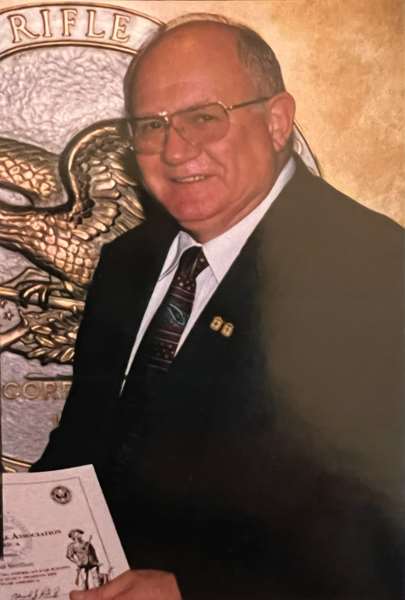
Ruby Fox, a personable competitor whose time had come, recorded her fourth women’s pistol title in 1981 and it proved to be just the beginning of one of the most dominating tenures in National Match history. Her successive win streak hit three just as Kenneth Swanson was in the middle of his own three-year reign as junior champion, while Gil Hebard’s impressive consecutive run ended at seven when Robert Coghe topped the senior category.
Capping the pistol phase were the three Board events where more than 700 shooters each competed in the President’s and National Trophy Individual (NTI) Matches. Marine Gunnery Sgt. Stephen Edmiston captured the inaugural 40-shot President’s Match while a rare civilian win took place in the NTI when Cass Gaska posted the high score. Gaska’s win was the first by a civilian since Ralph Thompson last won the match in 1969.
In the National Trophy Team (NTT) Match, All National Guard Blue beat out 62 other teams for the Gold Cup Trophy. The field was one of the largest in history due in part to this year’s federal backing that allowed more state teams to receive Board funding.
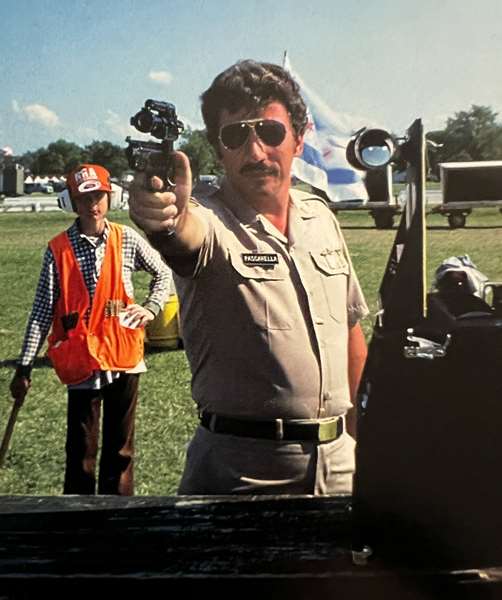
Weather is a Camp Perry variable that has affected many National Match contests and 1981 was no different. Smallbore shooters were the unlucky recipients of Mother Nature’s wrath as just a few days of calm appeared during a week filled with winds so fierce that bullets strayed from the X-ring to the edges of the target card and beyond.
The conditions were bad enough for the homegrown shooters who were familiar with the wild swings and shifts of the Camp Perry winds, but as the 1981 program cover advertised, this was a Pershing Match year, making it a harsh experience for the uninitiated on hand.
“With Wigger a prohibitive [smallbore] favorite every year, the race for second place takes on more significance.”
—The American Rifleman, October 1981
For the first time in smallbore history at the National Matches, the position events preceded prone. The change was made to better accommodate the vacation and travel plans of competitors and seemed to have no tangible effects as the position matches were consistent in many ways with past national championships. The most obvious recurrence was that Lones Wigger, Jr., stood atop the victor’s podium at the awards ceremony.
Another was that weather forced a reduction in the course of fire for the third time in seven years. Although Wigger was dominant, the windy conditions resulted in an array of individual match winners. Wigger won the first two iron sight events, but did not take another fired match. His 1152 easily outdistanced his nearest challenger, Jim Meredith, by 12 points for the iron sight title before conditions deteriorated.
As Wigger plugged away and finished near the top of every match, he built an overwhelming 25-point lead over second- and third-place finishers Robert Mitchell and Richard Hawkins, who tied at 2061. For Wigger, it was his sixth straight position title and 14th overall since first winning in 1963. He was not the only Wigger to tote home a prize though as this year son Danny led the collegiate category. Army Lt. Gloria Parmentier was the overall winner of the any sight aggregate and went on to earn the women’s national position title while Donald Burtis topped the seniors and David Lyman won civilian honors.
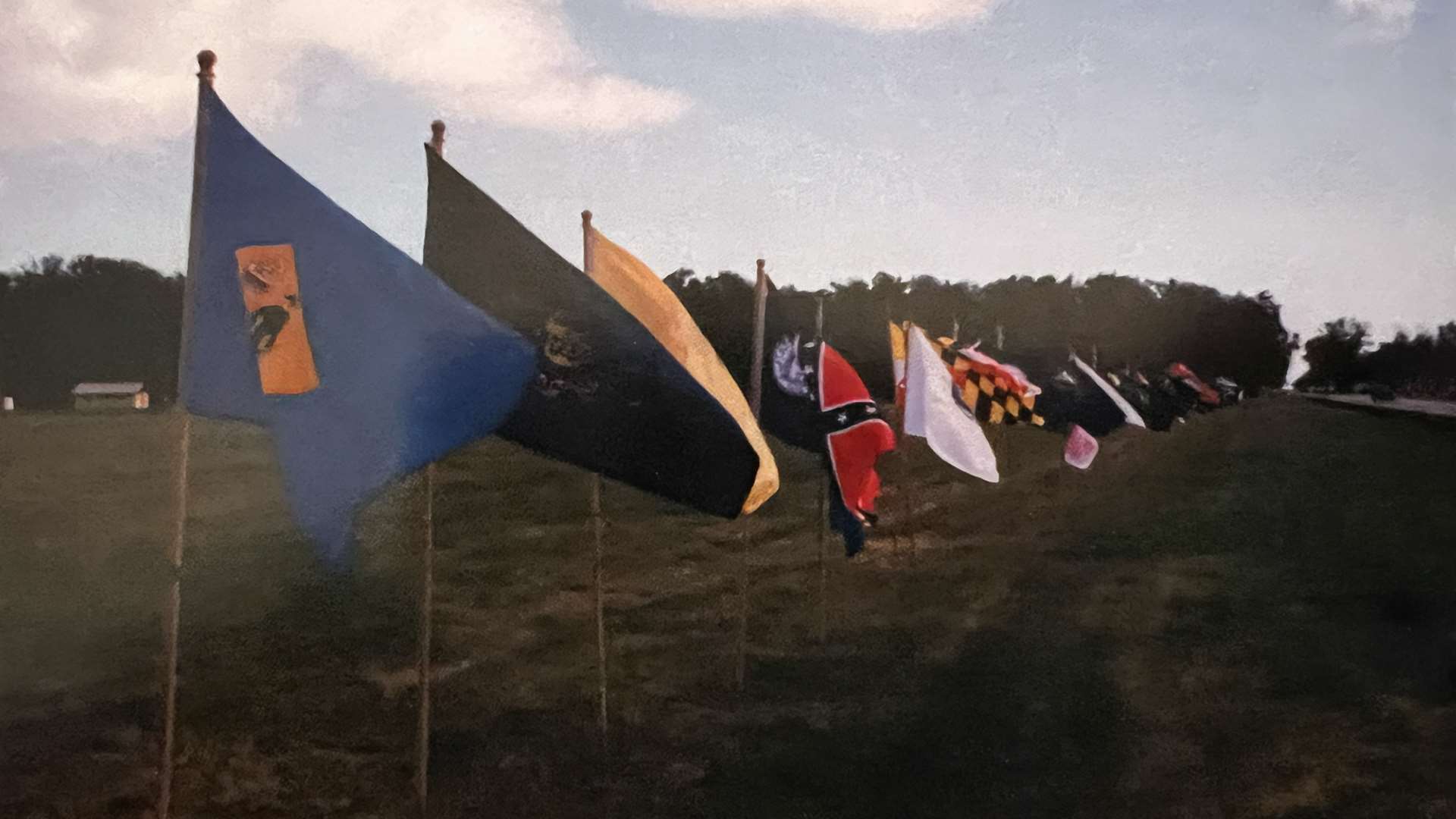
Shooting conditions deteriorated again as prone competitors took to the line in a cold, wet and windy environment, even though it was late July. Capt. Ernest Vande Zande, the defending national prone champion, proved his mettle and finished as the metallic-sight winner, with Presley Kendall and Mary Stidworthy close behind.
Before the any-sight matches began, team competition took place and while the Dewar and Randle teams conducted themselves well, the bigger event was the eighth edition of the Pershing Match. Ten-person teams from the United States, Canada and Great Britain faced off in a shoulder-to-shoulder iron sight Dewar.
The U.S. Pershing squad was drawn from the top eligible shooters in the metallic sight aggregate and featured some of the most prominent names in shooting, including six national champions (Kendall, Ross, Stidworthy, Vande Zande, Weaver and Wigger). In the end, six U.S. shooters cleaned the course and the other four dropped a total of five for a match-winning score of 3995-331X.
The British and Canadian Pershing teams battled it out as both posted scores of 3992, with Canada edging Great Britain by six Xs.
“Two days of unending wind, rain and cold made July seem like March as range towers swayed, matches were delayed and shooters were dismayed by embarrassing scores.”
—The American Rifleman, October 1981
Scores picked up during the second half of the prone championships in direct response to the improved weather. Black Hawk Rifle Club member John Reynolds was the only fired match winner who was not a national champion as the names Mitchell, Stidworthy, Boyd, Comley, Cook and Weaver topped the bulletins of the other contests.
In true national championship form, drama surrounded the final target of the final match. Vande Zande and Stidworthy were close to a photo finish going into the last 20 shots. Stidworthy, no stranger to the situation, had previously won and lost national crowns in the last stage. Vande Zande had a one point lead while Stidworthy had the higher X count. Scopes focused on Vande Zande’s last target revealed a close shot, but when the announced result was a nine, he became a former champion instead of a defending one. The prone championship went to Stidworthy with a score of 6391-530X over Vande Zande’s 6391-516X.
Stidworthy became the fourth person to win three NRA national prone titles, joining Bill Woodring, Presley Kendall and Lones Wigger, Jr., in the elite class. She was also a visible presence on stage by adding the service, women’s and collegiate honors to her collection.
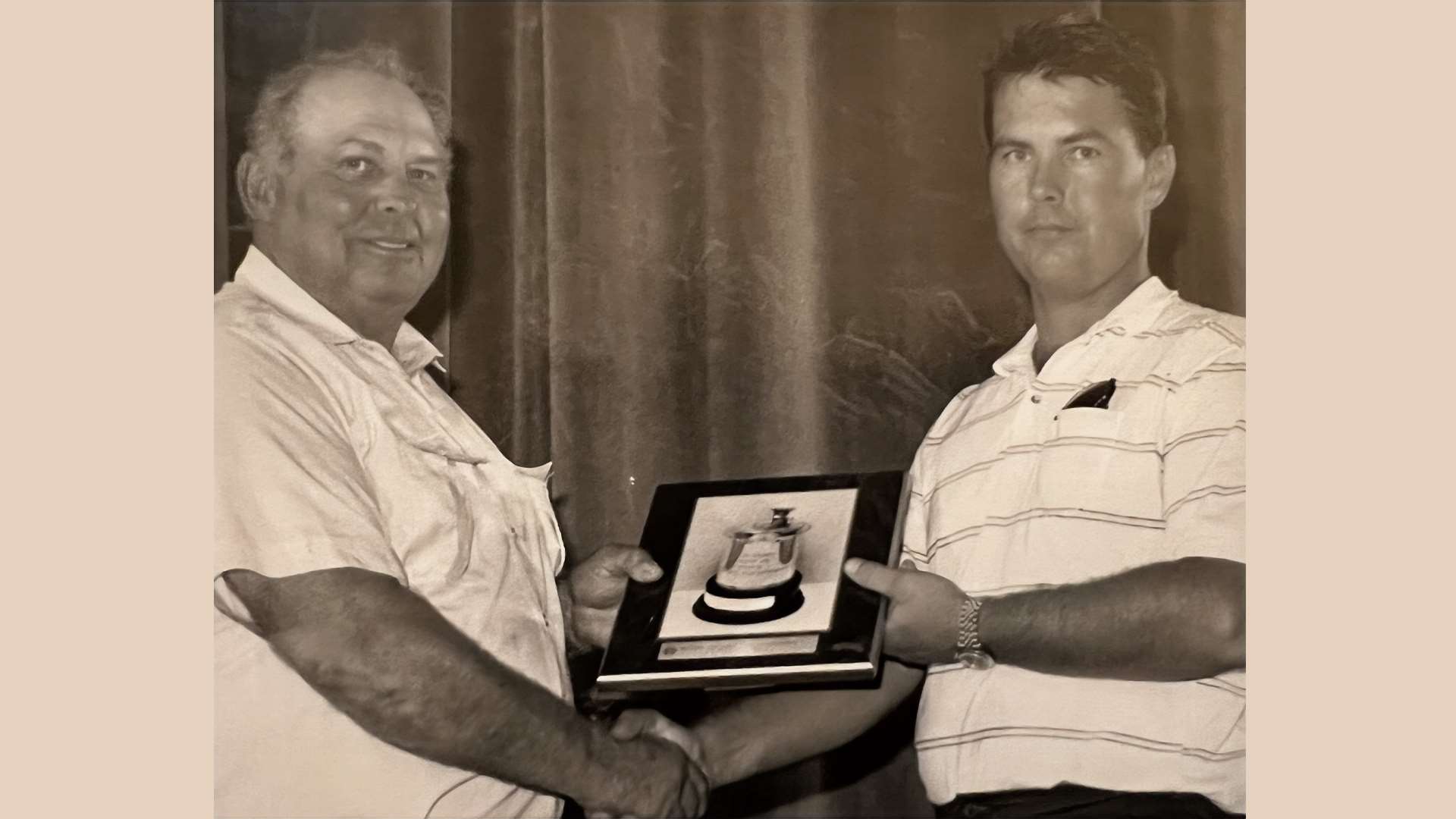
Dave Ross, the 1970 national champion, was the Schweitzer medallion winner as high civilian while Richard Hanson returned to the stage to reclaim the senior title he lost the previous year, not necessarily to a superior competitor, but due to a rule change that introduced new age award categories. Hanson became the first of a few elder statesmen of the sport to win a senior title, followed by an intermediate senior championship before returning to claim the senior category again.
The headline of the 1981 high power competition was the impressive performance by Marine CWO David Boyd, who dethroned four-time champion Carl Bernosky by a one-point margin to become the first service rifle shooter since Martin Edmonston (1972) to win the open title.
Boyd, known as D.I. to his friends and fellow shooters, was the eighth person in the 30-year history of the high power championship to post the high overall score with a service rifle. Having just competed in both smallbore phases where he posted wins in his last position and prone matches as an active Marine, Boyd finished his service career in grand style with his high power victory.
The 1981 competition included a touch of irony as Boyd battled defending champ Bernosky for the crown in what was the first face-off between the two since 1977. It was in that year that Bernosky came from behind to best Boyd, who had lost 10 points on a rapid-fire target when officials could not conclusively determine if a double shot had occurred. In the 1981 rematch, Bernosky won the Nevada Trophy while Patrick McCann claimed the other two championship aggregates, the Vandenberg and Clarke.
Boyd won just one match, the Navy Cup, but his consistency with the M14 produced 2369 points to Bernosky’s 2368. With his score, Bernosky claimed the civilian honor and the Wright Trophy as the match rifle champion.
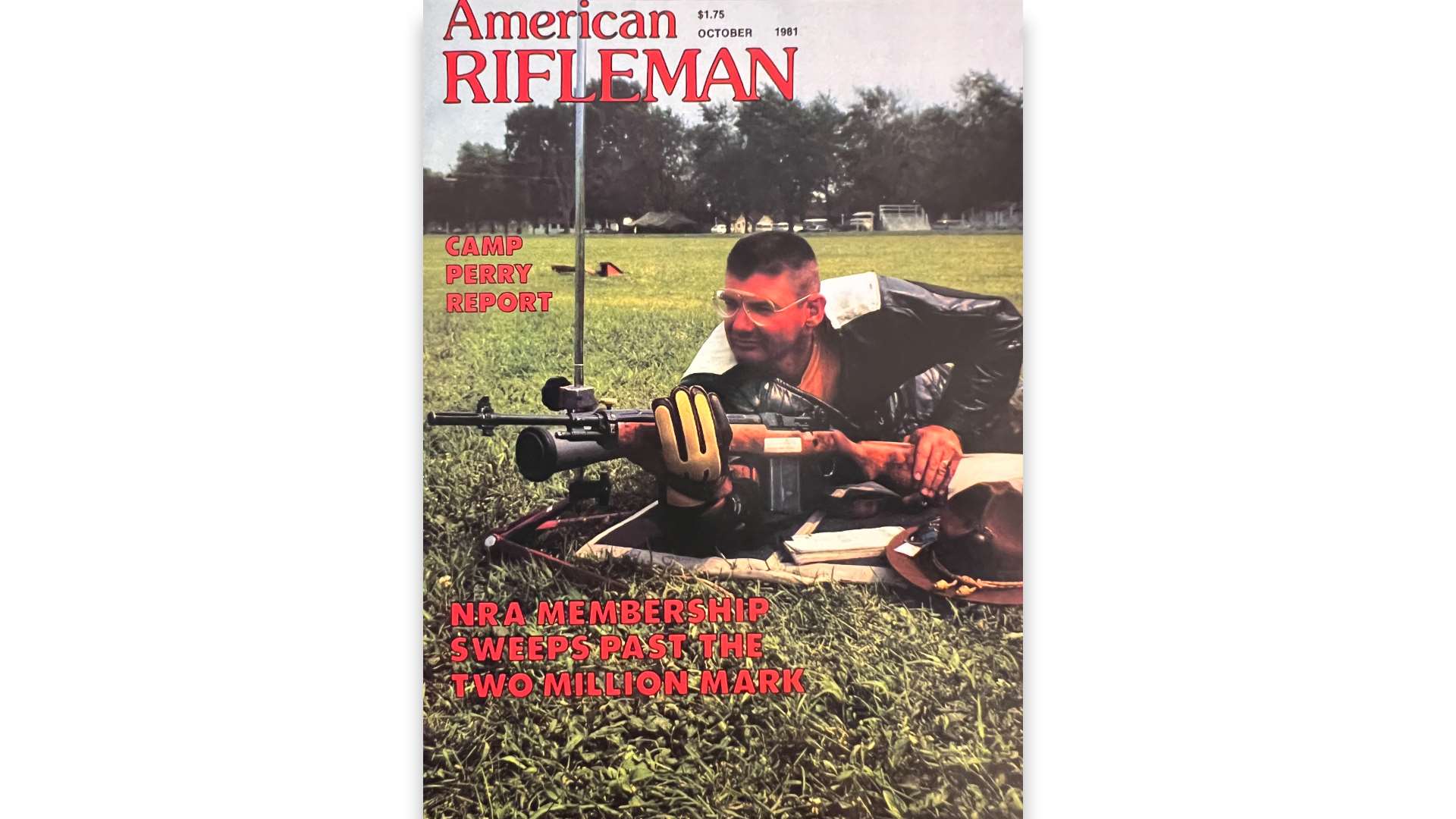
Noma McCullough won her second women’s title in three years, Mark Liebetrau claimed his third straight junior crown and Creighton Audette returned as senior champion, having last won the title in 1977.
Prior to the excitement of the NRA championship, Board events opened the high power phase with the firing of the President’s Match. Marine Gunnery Sgt. Russell Martin topped the 943-person field for the honor while teammate John Johnson won the National Trophy Individual contest with a match record 494-23X. U.S. Army Reserve Blue posted the highest team score among the 74 contenders on hand for the National Trophy. The Marines then bounced back in record fashion on the final day of Board competition to win the Infantry Trophy Match by a 92-point margin at 1344.
Bernosky constructed a comeback of his own when, on the last day of the program, he fired 45 consecutive 10s (22 of them Xs) in the Palma Individual Match to become the first to clean the 45-shot course that features 15 rounds each at 800, 900 and 1,000 yards. Two days prior, three-time service rifle champion and Marine CWO Robert Goller won the Leech Cup for the second time in his career and helped guide his team to victory in the Roumanian Trophy Match.
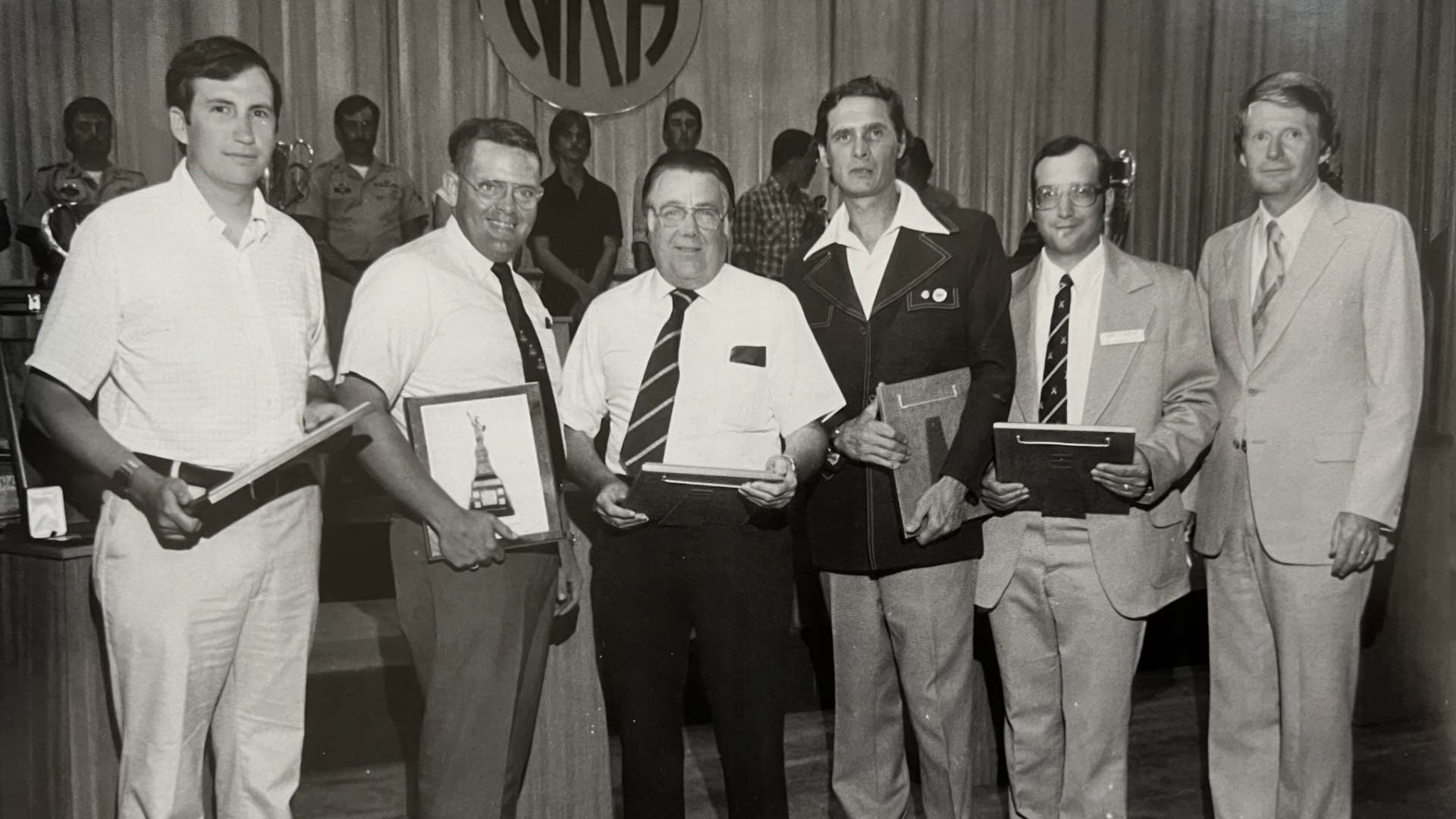
The Wimbledon winner was Patrick McCann who, like Goller, was part of a team victory when his Hardholders won the Herrick Trophy in addition to the Port Clinton Trophy for high civilian honors. Upon the conclusion of the long-range firing, McCann’s Herrick teammate and former national champion Middleton Tompkins was awarded the Canadian Cup for his high aggregate score in the three individual events that feature 1,000-yard firing (Leech, Wimbledon and Palma Individual).



